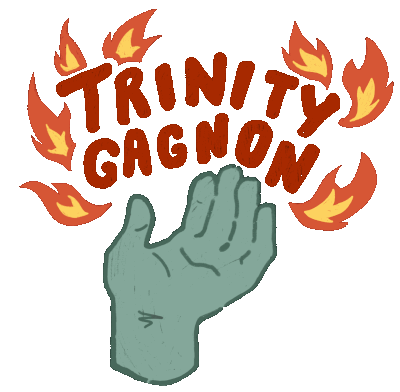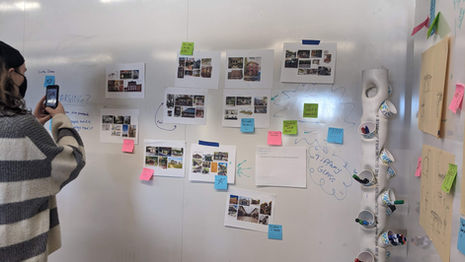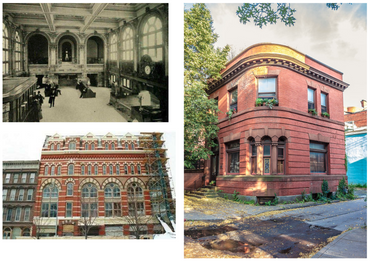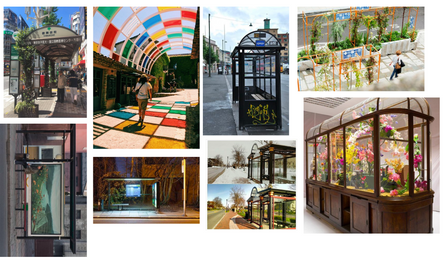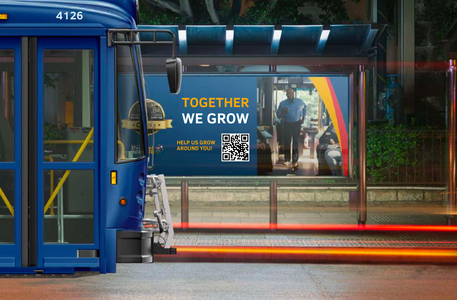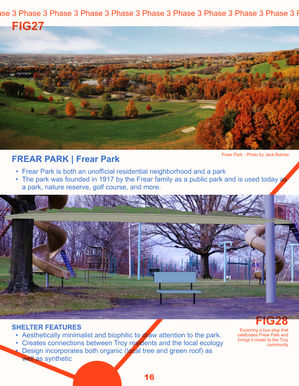Accessing the CDTA
Fall 2023
Design Studio III - Term Long 4-Person Project
The Capital District Transportation Authority CDTA provides essential bussing transportation to Troy NY residents, but has systematically suffered from rider-experience, communication, and informational growing pains, leading to rider mistrust, ineffective transportation, and general user dissatisfaction across the Troy NY service area. Our strategic and comprehensive multi-phase plan re-establishes communication between rider and service provider, upgrades crucial informational and wayfinding products, and establishes community connection across Troy.




Brief and Research
Project Brief
Our prompt for this project was simply "Access". In a group of four, we were given 17 weeks to create our project. Our shared interests in urban planning and infrastructure design lead to our goal of a project regarding access in public transportation--specifically bus systems
Problem Research and Defintion
The basis of this project comes from an analysis of public transportation in the United states and a common frustration around inefficient and rider-unfriendly public transportation. This project was also largely motivated by the ever-increasing effects of climate change. This project pushes public transportation leaders to think strategically about the implementation and expansion of public transportation and public transportation amenities to serve as a way to fight or ease the pains of climate change.
Understanding the rider experience issues that Troy riders experience starts before riders even get to the bus stop and continues throughout riders navigating the Troy service area.
Common negative rider experiences:
-
Inconsistent stop appearances: Seemingly random placement of CDTA bus stop signs, mixed throughout new and existing road infrastructure
-
Inadequate stop amenities: Lack of bus stop amenities, such as bins, seating, or weather protection, or inconsistency in amenities provided at each stop.
-
Poor information communication: Confusing bus stop signs with lacking information regarding routes and their relevant details. Cluttered and difficult-to-use maps that are difficult to access
-
Invisible stops: Bus stops that are hidden by other infrastructure or by overgrown shrubs
-
Difficult Night-time Use: Extremely difficult night-time wayfinding due to lack of lighting around stops and inconspicuous signage
Various CDTA bus stops around Troy
After identifying these problem areas we wanted to better understand specifics about real riders-experiences in Troy. To accomplish this, we posted surveys across Troy featured at many bus stops. We targeted users and non-users, attempting to understand why people do or don't use the current system.
In the resulting responses, we saw a lot of thanks for the presence of the buses, but confirmation of the problem spaces we identified and certified that the rider-experience was dissatisfactory. While administering this survey we also spoke with real riders utilizing this system, who discussed frustrations around bus drivers not stopping at bus stops because the driver could not see the bus stop. Riders explained that when this happens, especially on their way to work, it causes loss of wages and consequences from their employers, and the CDTA has a one week call back range to respond to rider feedback or problems, causing extreme frustration for already dissatisfied riders and ultimately building distrust between CDTA and riders.








Flyers with QR codes to our survey
Initial Ideation
Initial Idea: Physical Stops
Our original idea for this project was the redesign the bus stops for the Troy CDTA system, involving human sized prototypes and user testing with CDTA riders. These stops would be more accessible, more easily identifiable, and better reflect the community of Troy. Ultimately this was unreasonable because of time and material constraints, but the core goals were brought to later stages of the project.
Research
Our first ideation considered very broad questions of public infrastructure with research including how ADA requirements work, Soviet bus stop architecture, financial considerations for public works projects, ongoing and future CDTA project analysis, and how to make ecologically responsible/restorative transport infrastructure. From here we developed bus stop designs, discussed them with eachothers as well as visiting faculty and alumni from the STS department. Comments from this and more research informed out first physical prototypes as well as several digital ones. The physical designs were built around a tier system each with several base amenities (rain cover, seating, bus information) and more amenities as their popularity increased. We also took into account, after a discussion with Professor Raquel Velho, information design such as signs, branding, and maps.
Ultimately the idea of the physical prototype was dropped. Two months was not enough time to produce any sort of bus stop that could be user tested and we did not have the budget or connections to get large enough materials to test our designs. We moved instead to focus on updating the current CDTA bus system with new maps, signs, and amenities.
Interview with Industry Professional: Raquel Velho
We had an interview with Raquel Velho, a sociologist of infrastructure and design, and our former design professor–who has also done extensive research in the field of disabilities studies and public transportation, particularly the London transit system.
She gave insight into ADA regulations and requirements in the U.S and to look into New York-specific rules. “Regulations are conditions of possibility,” she said. In order for our bus stop to be feasible, it needed to fit within the limitations that govern real bus stops.
At this stage in our development, we were using Soviet bus stops as our main source of aesthetic inspiration; however, they lacked several requirements of “good” bus stops. Their structures are often fully enclosed, which is dangerous if someone or something is blocking the only exit and may leave users feeling unsafe if they can’t observe their surroundings when in the stop. They are also so unique that they are difficult to identify as bus stops, which can potentially cause a barrier to entry for people who are unfamiliar with the routes: the exact thing we are trying to fix. Raquel insisted that a unifying language be used in order to clearly convey that our structures were bus stops and all a part of the same system. Standardization is a key part in governmental architecture and appealing to public works projects, which we were rapidly becoming aware were our main stakeholders above just bus riders.
Raquel suggested looking closer at the historical contexts in which the Soviet stops were developed to understand the purpose they were trying to convey. The main takeaway from the Soviet bus stop architecture was the cultural statements each one made. Could we take more inspiration from the message of these stops more than their aesthetics, and instead focus on making a stop that had a similar impact on Troy?
She also gave us considerable other factors to take into account when designing a bus stop. Public infrastructure interacts with more people than just those it serves; for example, even non-bus riders will still walk and drive past bus stops. What sort of interactions do we need to account for? How will these stops fit into the preexisting structure around them, like the sidewalks, property behind them, and foot traffic of the area? Raquel gave us many realistic restraints to consider.
Ideation Analysis
After our ideation and development we met with an Industry professional from the CDTA to discuss public transportation improvements and feasibility.
Interview with Industry Professional: Megan Quirk
We were able to sit down with the Senior Capital Planner at the CDTA, Megan Quirk. She has only been a part of the CDTA for the past year and a half, but has worked in several other planning commissions in New York. Our main goal of this interview was to learn more about the CDTA’s method of operation, as well as current and future goals, so that we could better understand THE REALISTIC REQUIREMENTS. We also had questions about suppliers and design decisions that only someone who worked directly with the CDTA would be able to answer.
In terms of the realistic possibility of something like this project ever being considered, Megan seemed enthusiastic about the idea of unique bus stops and route improvements. There is precedent of variations in designs of stops around Troy, and although they were minimal (for example, the walls of the bus stop near the hospital are white instead of gray), she said it was proof that the CDTA was open to the idea of it. Broome County also recently launched a redesign program of their line in the SUNY Binghamton area, and that was a great example of improvement and redesign initiatives. Realistic requirements to consider when it comes to individualized bus stops though are cost of replacement; glass panes get shattered, furniture gets broken. Using common elements that can be produced in bulk reduces the cost of replacement in critical components of the shelter. Therefore, some level of standardization is necessary for financial feasibility. The CDTA receives a yearly FDA grant, but only for standard shelters. Any other type of shelter, ones that may have unique designs or structures, are usually funded through other grants or donations. The most recent addition to the CDTA, the BRT (Bus Rapid Transit) system, has its own separate grants. The CDTA’s current supplier, Brasco, offers a variety of bus stops, and the CDTA chooses from their options of pre-built structures.
Megan agreed that the signs and maps were an area of concern for the CDTA as well. There were several outdated maps; their style and structure was likely based off of someone’s design from the 70s and the CDTA has only modified it, never overhauled it, said Megan. Meaning, the map’s very inherent design was not made with the CDTA’s current state in mind, and its inherent mismatched qualities show through. The CDTA has been thinking about how to make their maps more accessible, and the answer thus far has been websites and QR codes for their cheap and widespread availability. Sign improvements also suffer from similar problems with the amount of lines, some labeled by colors and some labeled by numbers, outgrowing the current structure of the design.
The current goals of the CDTA are to consolidate bus stops; whereas in the past, they put a stop wherever was requested with little discrimination, they are now looking to consolidate stops that are within the same block or a reasonable walking distance from one another. This creates less of a need for simplistic, small bus stops and opens up a possibility for larger shelters to be built in order to serve a larger area.
Second Idea: Modular Products
After our interview with Megan Quirk we understood that dissatisfactory rider-experience wasn't the only issue keeping public transportation in Troy from meeting rider needs, but lack of direct communication between the CDTA and Community was too. After this realization we decided to meet with a design professional for guidance on developing a more holistic and comprehensive product.
Final Ideative Iteration
After making this last pivot, we found ourselves struggling to carry through with any product that was useful, feasible, and not already commonly available. With the allotted CDTA budget we had learnt from Meghan, it was hard to imagine any substantial change in the current bus infrastructure. To try to design a product that would—simply due to the nature of manufacturing and installing a new product—never realistically come to fruition felt like an exercise in the futile.
Conversation with Design Professional: Jim Malazita
We found ourselves in this awkward place of having fully defined our problem (and the rather overwhelming nature of it) and the context for which we were designing, but being unable to work past the ideation stage without needing to disregard a significant obstruction in our problem space (the budget and willingness of the CDTA to implement new infrastructure that is not a basic necessity). We realized that some additional outside council would be helpful. We fortunately had the opportunity to talk to Jim Malazita, a game designer and researcher—and a former design professor of ours.
Through a conversation with Jim, we came to the understanding that in order to carry this project to a satisfying end, it may be necessary to be aspirational and idealistic—within reason. By acknowledging the boundaries of our problem space, and utilizing the research we had done about it, our aspirational choices could be informed and grounded, even if not a likely development in our immediate future.
The CDTA's reluctance and/or inability to change was a fundamental issue stemming from the Capital Region's government, frankly and the United States' approach to urban planning. That was something we had learned early on in our research and problem definition. By acknowledging this in our final product, perhaps even concepting a way to improve the situation, if even only on a local scale, we decided we could develop a product that didn't reek of ennui, but wasn't wholly imaginary.
Final Idea: Comprehensive Plan
Thus, we came to our last, and final overall concept for our project. A comprehensive proposal and timeline for the CDTA, through which they could incrementally improve their physical infrastructure, and repair the trust between the bus system and its users. This plan would be structured chronologically, with phases of improvement that increased in ambition, scale, and budget, but had a realistic starting point that fueled the plan's overall progress.
A key part of this proposal included ways of proving to the CDTA the importance of Troy's bus system, and why it was a worthwhile investment to implement the later stages of the proposal, or otherwise take the money and time to improve this crucial public service.
Proposal Components
-
Introduction: Recommended Method of Implementation
Each of the stages in our proposal relied on its predecessor. By ensuring that the research and outreach conducted in every stage was used to inform the physical changes enacted in the next was a key part of making sure the users were always kept at the forefront of the improvements. The riders who rely on the bus network to get to work, go to school, or just get around to various places, were the ones who would be experiencing the changes implemented on the CDTA—whether they be good or bad. The system should be built for them, and their needs, so regularly receiving community feedback and actually taking it into account is something we consider integral for any change the CDTA may choose to enact.
-
Phase One: Immediate Informational Improvements
These improvements should be executed within 0-1 years, and center largely around the communication of information related to Troy’s bus network. Understanding what routes, time schedules, and stops the buses operate by can act as a large barrier to use for potential riders.
Our work for this phase included redesigning the current CDTA bus stop signs and the route maps to include more rider-relevant information, while negating the information clutter prevalent in the current designs.





-
Phase Two: Modular Physical Improvements
Occurring 3-5 years post Phase 1 implementation, Phase 2 meets the rider-experience needs of a growing Troy and expanding route usage, while maintaining CDTA control over implementation and cost. Phase 2 also introduces a user-centered form of Implementation strategy to deliver data-driven decisions that are reflective of the riders utilizing these services.
Our work for this phase included researching the CDTA's current shelter manufacturers and producing a list of already-available modifications and additions the bus shelters would greatly benefit from--using our user research conducted early in the project to inform our choices. This phase also includes a proposed marketing campaign for the CDTA that specifically requests feedback from users and strives to repair the relationship between the CDTA and its Troy riders.
-
Phase Three: Community Connections
The final phase, occurring 10-15 years after phase 2, transforms the Troy bus system to a celebration of Troy and centerpiece of several Troy landmarks. This will not only bring more community engagement to within Troy but also act as an attraction for the city. Targeting notable Troy third spaces (locations that are neither work nor living spaces), this phase emphasizes the importance of encouraging community usage of such locations, and how robust public infrastructure is not only a necessity, but a point of celebration.
For this stage, we designed a series of speculative bus shelters and stops, each placed in different Troy neighborhoods. We researched the history behind these potential sites, making sure to choose locations that directly benefited the Troy community. We also researched the architecture present in these places, consciously striving to incorporate the aesthetics and identity of these locations into our concepts--while still preserving functional use.






